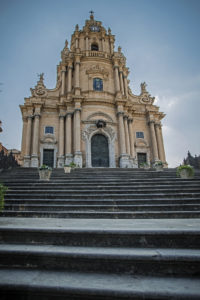Nature and architecture blend perfectly in Ragusa. Construction adapted to the environment in a surprising way. It was the result of careful planning involving many architects, engineers and foremen.
Each made a valuable contribution, though unfortunately it is not always possible to acknowledge everyone who worked on the project (such as the workers). Fortunately this is not the case for the “maestro of the Val di Noto”, Rosario Gagliardi.
He was perhaps the most creative 18th-century Sicilian architect, and was certainly the most innovative. He proposed a Baroque style that started with the basic rules then became something more beautiful and newer. His designs always took into account the context of the town, where it was and what was around it. This way, the buildings of the towns he built fit perfectly into the space.
This way, the buildings of the towns he built fit perfectly into the space.
He invented the tower façade, a façade that ended with a tower and bells, like the cathedral of San Giorgio (St. George) in Ragusa Ibla.
In his eyes, architecture was not only a useful discipline for constructing and designing a building, it also had to be able to arouse emotion. For this reason he placed sculptural decorations on the walls that added life and expression to his façades.
Unfortunately, not all of his ideas could be executed; Gagliardi had to be mindful of the economic factor and the money at his disposal.This was not, however, an obstacle to his imagination. Using his skill, the architect always managed to work and combine economic and aesthetic factors.